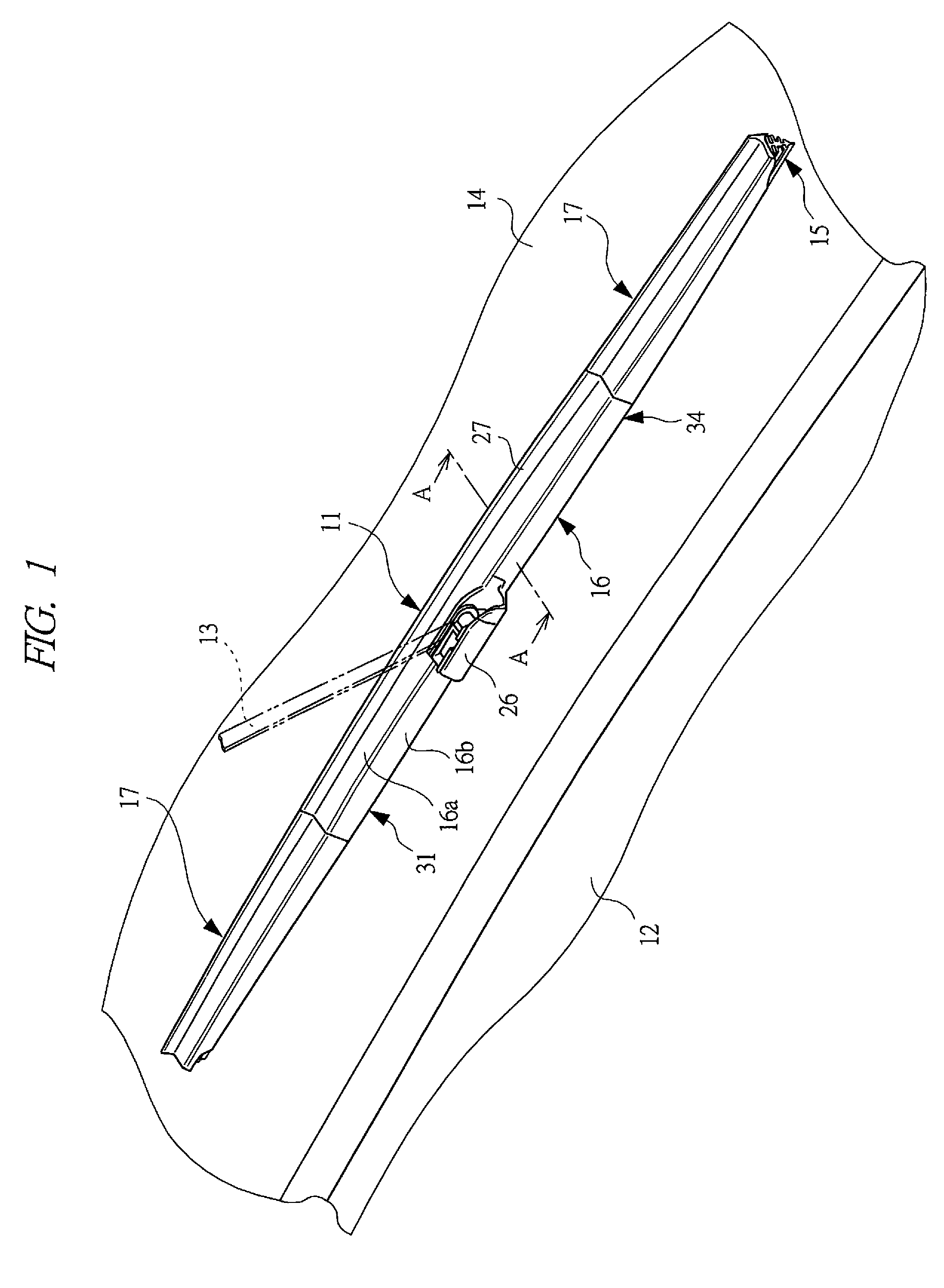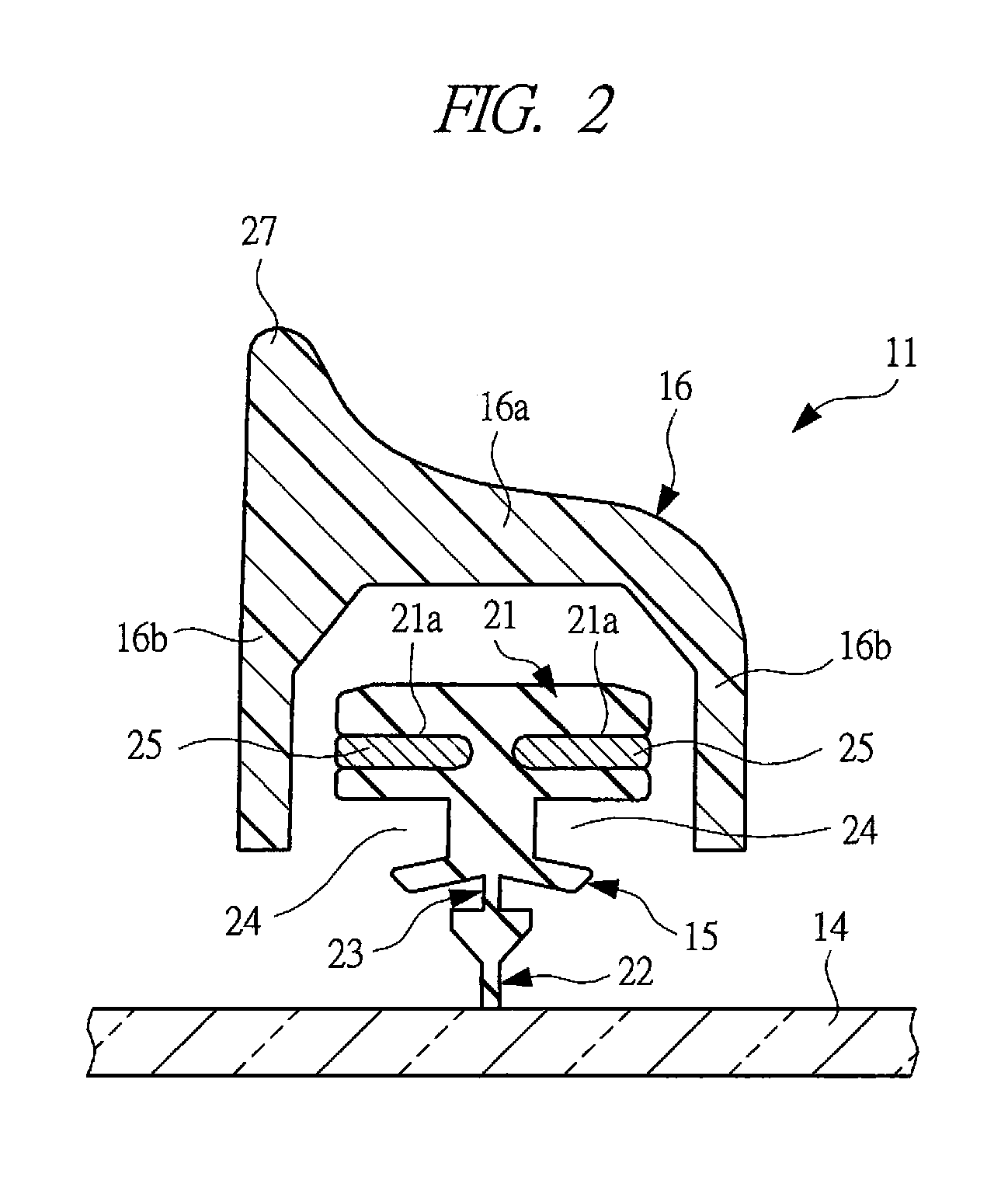Method of manufacturing blade rubber and wiper blade
a technology of wiper blade and blade rubber, which is applied in the direction of vehicle maintenance, vehicle cleaning, window cleaning, etc., can solve the problems of difficult control of the treatment of the blade, the manufacturing cost is higher than that of the existing extrusion molding, and the superior durability of the epdm is difficult to reflect. achieve the effect of superior durability and wiping performance, and environmental burden reduction
- Summary
- Abstract
- Description
- Claims
- Application Information
AI Technical Summary
Benefits of technology
Problems solved by technology
Method used
Image
Examples
example
[0091]Hereinafter, the present invention will be described in more detail based on Examples.
experiment 1
Verification of Friction Reduction Effect by Irradiation Treatment
[0092]With 100 phr of EPDM which is the non-diene-based rubber, 5 phr of a peroxide cross linker, 5 phr of zinc oxide, 2 phr of stearic acid, 1 phr of a vulcanization accelerator auxiliary agent, and 50 phr of carbon black were mixed, and the pair of blade-rubber molded bodies were molded by press molding. The blade-rubber molded bodies were dipped into aqueous solution of 50 weight % HEMA, and were subjected to the simultaneous irradiation treatment at a temperature of 25° C. with 10 kGy of electron beam as illustrated in FIG. 6B (the generation of the radical active sites by the electron beam irradiation and the graft polymerization of HEMA were simultaneously performed). The micro Martens hardness (N / mm2) of the blade-rubber molded bodies obtained after the treatment was measured in conformity with IS014577-1 by a dynamic ultra micro hardness tester manufactured by Shimadzu Corporation.
[0093]Further, also in exampl...
experiment 2
Verification of Progress Degree of Surface Modification
[0095]A progress degree of the surface modification obtained by the simultaneous irradiation treatment to the blade-rubber molded bodies molded from EPDM in the above-described Experiment 1 was verified by studying a relationship between an absorbance ratio (1720 cm−1 / 1375 cm−1) obtained from a total reflection measuring method (FT / IR analytical system called Attenuated Total Reflection: ATR-FT / IR) and the micro Martens hardness of the rubber surface. The result is illustrated in FIG. 9.
[0096]As illustrated in FIG. 9, the micro Martens hardness tended to be increased as increasing the absorbance ratio. That is, it was found out that the micro Martens hardness can be increased by the graft polymerization of HEMA by the electron beam irradiation.
PUM
| Property | Measurement | Unit |
|---|---|---|
| temperature | aaaaa | aaaaa |
| mol % | aaaaa | aaaaa |
| temperature | aaaaa | aaaaa |
Abstract
Description
Claims
Application Information
 Login to View More
Login to View More - R&D
- Intellectual Property
- Life Sciences
- Materials
- Tech Scout
- Unparalleled Data Quality
- Higher Quality Content
- 60% Fewer Hallucinations
Browse by: Latest US Patents, China's latest patents, Technical Efficacy Thesaurus, Application Domain, Technology Topic, Popular Technical Reports.
© 2025 PatSnap. All rights reserved.Legal|Privacy policy|Modern Slavery Act Transparency Statement|Sitemap|About US| Contact US: help@patsnap.com



